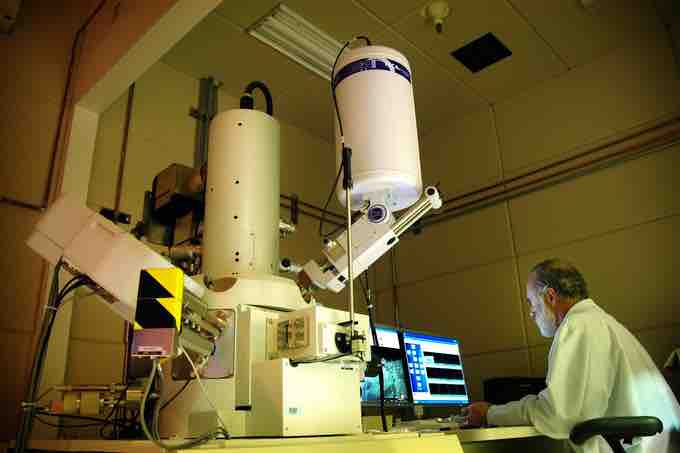What is R&D?
The term R&D or research and development refers to a specific group of activities within a business. The activities that are classified as R&D differ from company to company, but there are two primary models. In one model, the primary function of an R&D group is to develop new products; in the other model, the primary function of an R&D group is to discover and create new knowledge about scientific and technological topics for the purpose of uncovering and enabling development of valuable new products, processes, and services. Under both models, R&D differs from the vast majority of a company's activities which are intended to yield nearly immediate profits or immediate improvements in operations and involve little uncertainty as to the return on investment (ROI). The first model of R&D is generally staffed by engineers while the second model may be staffed with industrial scientists. R&D activities are carried out by corporate and governmental entities.

A worker makes final checks
This is an example of R&D in action.
R&D's Role
New product design and development is more often than not a crucial factor in the survival of a company. In an industry that is changing fast, firms must continually revise their design and range of products. This is necessary due to continuous technological change and development as well as other competitors and the changing preference of customers. Without an R&D program, a firm must rely on strategic alliances, acquisitions, and networks to tap into the innovations of others.

Microscopy lab
Research being carried out at the Microscopy lab of the Idaho National Laboratory.
In the U.S., a typical ratio of research and development for an industrial company is about 3.5% of revenues. A high technology company such as a computer manufacturer might spend 7%. Although Allergan (a biotech company) tops the spending table with 43.4% investment, anything over 15% is remarkable and usually gains a reputation for being a high technology company. Companies in this category include pharmaceutical companies such as Merck & Co. (14.1%) or Novartis (15.1%), and engineering companies like Ericsson (24.9%). Such companies are often seen as credit risks because their spending ratios are so unusual.
Generally such firms prosper only in markets whose customers have extreme needs, such as medicine, scientific instruments, safety-critical mechanisms (aircraft), or high technology military armaments. The extreme needs justify the high risk of failure and consequently high gross margins from 60% to 90% of revenues. Gross profits will be as much as 90% of the sales cost, with manufacturing costing only 10% of the product price, because so many individual projects yield no exploitable product. Most industrial companies get only 40% of revenues.
History of R&D
Research and development costs are costs incurred in a planned search for new knowledge and in translating such knowledge into new products or processes. Prior to 1975, businesses often capitalized research and development costs as intangible assets when future benefits were expected from their incurrence. Due to the difficulty of determining the costs applicable to future benefits, many companies expensed all such costs as incurred. Other companies capitalized those costs that related to proven products and expensed the rest as incurred.
As a result of these varied accounting practices, in 1974 the Financial Accounting Standards Board in Statement No. 2 ruled that firms must expense all research and development costs when incurred, unless they were directly reimbursable by government agencies and others. Immediate expensing is justified on the grounds that (1) the amount of costs applicable to the future cannot be measured with any high degree of precision; (2) doubt exists as to whether any future benefits will be received; and (3) even if benefits are expected, they cannot be measured. Thus, research and development costs no longer appear as intangible assets on the balance sheet. The Board applies the same line of reasoning to other costs associated with internally generated intangible assets, such as the internal costs of developing a patent.